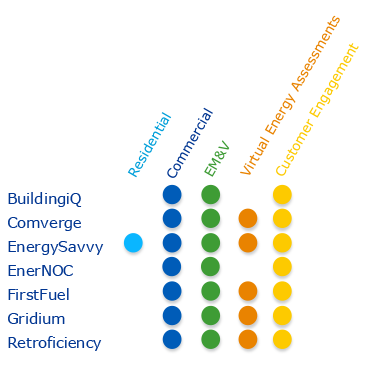By John Otterbein | Tue, January 5, 16
This post was written by Jake Oster who is the senior director of regulatory affairs at EnergySavvy. This piece was originally published at EnergySavvy's blog.
Ever since the term “EM&V 2.0” was first coined in 2014, the energy efficiency industry has been debating how the emerging landscape of tools, technologies, and software products will modernize energy efficiency measurement.
Thus far, the discussion has been led by companies that are innovating in this space. But this month, two important organizations published studies on the field of evaluation, measurement and verification (EM&V) 2.0 and made clear to the energy efficiency industry that change is here.
The two papers provide complementary outlines for the near- and long-term applications for EM&V 2.0 tools (also termed “automated M&V” by Northeast Energy Efficiency Partnerships, or NEEP, and “ICT-enabled EM&V” by ACEEE). The near-term analysis is outlined in "The Changing EM&V Paradigm." A similar paper from the American Council for an Energy-Efficient Economy (ACEEE), entitled "How Information and Communications Technologies Will Change the Evaluation, Measurement, and Verification of Energy Efficiency Programs," takes a longer-term view of the innovations that will occur as a result of modern measurement tools.
These papers come at just the right time. The growing industry trend toward the use of EM&V 2.0 software tools is gaining traction. The topic has been featured at several recent industry panels and events, including the International Energy Program Evaluation Conference (IEPEC), ACEEE Intelligent Efficiency, and AESP Big Data Analytics Conference.
The passage of AB 802 in California is driving the measurement of energy efficiency to be based on “normalized metered energy consumption,” and this transition will likely require support from EM&V 2.0 technologies.
And in New York, the state commission’s Reforming the Energy Vision (REV) Track One Order states that “advances in technology [can] be used to challenge and enhance our traditional approach to EM&V.” The immediate value of EM&V 2.0 tools is covered in the paper published by NEEP. The report uncovers important findings for utilities and regulators, including:
- EM&V 2.0 can provide faster measurement, reduce the risk of surprises, and provide opportunities for course correction
- EM&V 2.0 can support robust and rigorous evaluation
- Evaluators can validate EM&V 2.0 tools and then find ways to incorporate the near-real-time results into formal evaluations

NEEP makes clear that EM&V 2.0 tools are here to stay and are fast becoming part of the energy efficiency landscape. A growing cadre of data analytics companies are deploying these tools and utilities are increasingly interested in using measurement technology for program management.
According to the paper, these analytics tools can provide “[r]apid and continuous feedback to customers and programs on the changes in facility consumption after measure installation.” This collection of program optimization benefits drives better results from energy efficiency dollars.
EM&V 2.0 tools also provide benefits and support to formal energy-efficiency measurement. According to the report, measurement technologies are using established practices, “similar to traditional degree-day billing analyses,” which have been used for years by evaluators.
As evaluators assess the methodology and outputs from these tools, they will continue to develop confidence in the results and rely on those results to support formal evaluation studies. Furthermore, EM&V 2.0 software offers some distinct advantages, such as offering “more thoroughly tested and vetted analytic[s]” and the potential to “reduce the total time required to complete evaluation of a program.”
EM&V 2.0 to Enable Next-Generation Efficiency
ACEEE’s report sees the immediate benefits for modern measurement tools and then looks at the potential for the next generation of energy efficiency. According to the report, “The energy efficiency sector will be transformed by the ubiquity of [information and communications technology]. It will simplify the harvesting of savings data, improve the accuracy and timeliness of reporting, and assist in providing context to energy data.”
ACEEE also sees opportunities that will emerge as a result of EM&V 2.0 technologies. As a starting point, the paper recognizes the ability to “measure energy savings with the same accuracy and fluidity that utilities achieve in measuring electricity consumption.”
This has long been a goal of the industry and a hurdle to allowing energy savings to be purchased “as a commodity that can then be traded in regional capacity markets.” In recognizing the capabilities of modern measurement tools, the report authors contend that EM&V 2.0 tools can “increase the volume of efficiency bid into capacity markets and financed by private-sector financial markets,” also a long-sought-after goal for the energy efficiency industry.
Next Steps for EM&V 2.0
While practitioners of EM&V 2.0 have been making these claims for some time, these papers provide significant recognition of the value that EM&V 2.0 tools can deliver. NEEP and ACEEE are injecting well-respected voices into an important industry discussion.
The field of EM&V is undergoing inevitable change. According to ACEEE, this will ripple across the structure of the industry. These papers make clear that this evolution should be embraced.
Today, EM&V 2.0 tools are supporting program optimization for utilities, which can lead to increased accuracy and rigor, as well as more comprehensive data to streamline EM&V and support traditional measurement methods.
Tomorrow, they can empower new program designs, increase value for energy savings, and open the door for the emergence of new energy-efficiency devices for homes and businesses.
